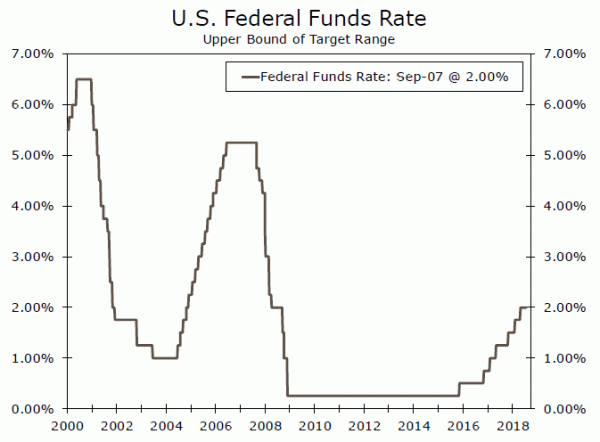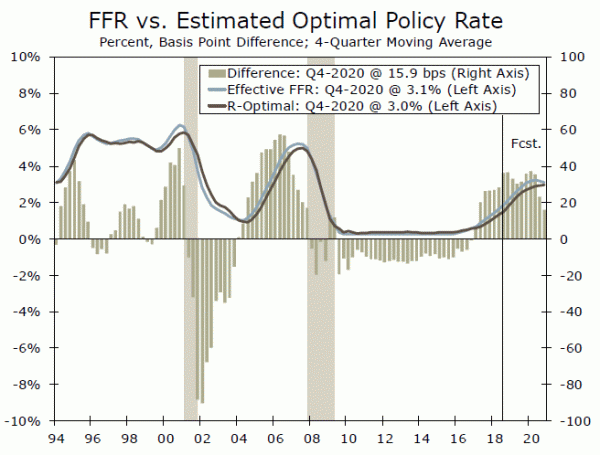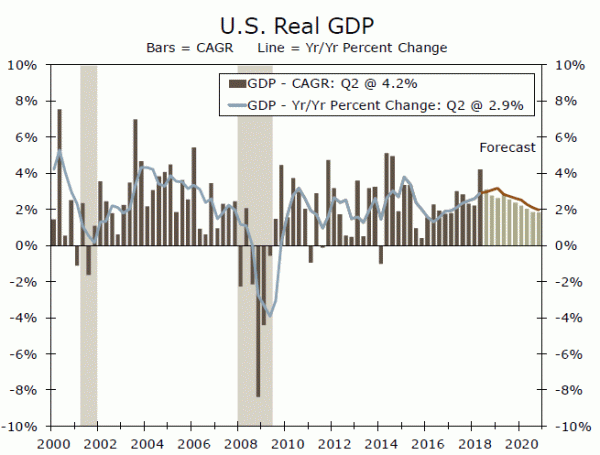We use an analytical framework we recently developed to inform our view of Fed policy going forward. We look for the FOMC to raise rates another 125 bps before it cuts rates at the end of 2020.
Is Fed Policy “Restrictive” Yet?
The Federal Reserve has raised its target range for the fed funds rate 175 bps since December 2015 (top chart). Naturally, there is interest in how much further the FOMC has to go and when the “terminal” fed funds rate will be reached. In a recent report, which is available upon request or on our website, we developed what we called “r-optimal” to help inform our views about the outlook for Fed policy. We employ the framework that was explained in that technical report to lay out our forecast of Fed policy through the end of 2020 in this non-technical report.
Our estimate of r-optimal along with the actual fed funds rate since 1994 is plotted in the middle chart. In prior tightening cycles, the FOMC has taken the fed funds rate about half a percentage point above r-optimal (middle chart). At that point, the Fed either subsequently backed off or the economy slid into recession. For example, the FOMC hiked the fed funds rate 275 bps between February 1994 and February 1995. But GDP growth slowed markedly in the first half of 1995, which prompted the Fed to subsequently reverse course. Between July 1995 and January 1996 the FOMC cut rates 50 bps. On two other occasions (2000 and 2006), the fed funds rate exceeded r-optimal by 50 bps or so on a four-quarter moving average basis and the economy subsequently entered recession.
As the middle chart also makes clear, r-optimal is not constant. As the economy strengthens and as the probability of “inflationary pressure” increases, r-optimal rises. Conversely, as economic growth weakens and the probability of “deflationary pressure” rises, r-optimal falls. The effective fed funds rate has been above r-optimal since early 2017, and we estimate that the difference between the two is nearly 40 bps at present.
Our forecast looks for real GDP growth to remain solid in coming quarters (bottom chart) and for inflation to edge higher. This implies that r-optimal will rise from about 1 ½% at present to 2¾% by the end of next year. Consequently, the FOMC will need to raise its target range for the fed funds rate. Otherwise, monetary policy could end up being too accommodative, which would not be appropriate for an economy that is operating near full employment and is showing signs of rising inflationary pressures.
We look for the FOMC to hike rates in line with the trend increase in r-optimal. Specifically, we expect that the FOMC will raise its target range for the fed funds rate 25 bps at its September meeting and again at its December meeting. We also look for 75 bps of additional rate hikes next year, which would take the top end of its target range to 3.25% by Q3-2019. As growth slows in the second half of 2019 and into 2020, we expect that the Fed will remain on hold. However, we forecast that real GDP growth will slip below an annualized rate of 2.0% in the second half of 2020, which we believe will lead the FOMC to cut rates 25 bps at the end of 2020.















